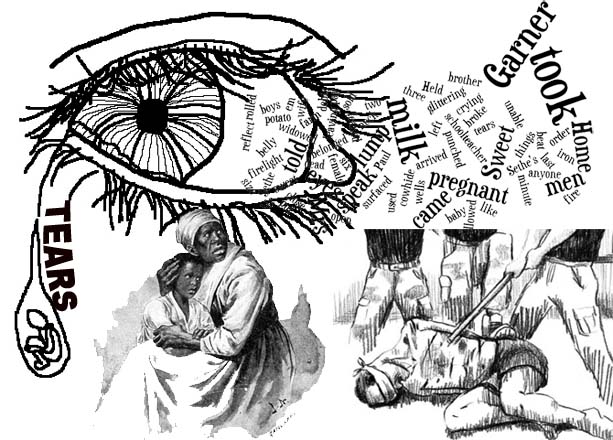
This picture depicts the scene from Beloved where Mr. Garner dies and schoolteacher takes over the sweet home. Life for the slaves became miserable from the day schoolteacher entered the sweet home. His torture and abusive behavior were intolerable due to which slaves went through physical and mental devastation.
This is a composite picture created in Photoshop combining three different pictures and one word art. I chose the picture to be colorless (black and white) because the picture represents a painful scene and I wanted to imprint the sadness in the picture. I created the word art with the help of online site www.wordle.net. This word art highlights some of the important words related to the scene such as tears, Garner, pregnant, milk. The picture at the bottom right shows three men brutally beating a man. This act represents the conduct of schoolteacher at sweet home. The next picture, which is at the bottom left, shows a scared mother embracing her child. She has fear on her face but at the same time, she is giving her affection and protection to her child from the threat. She represents Sethe, who is the only female slave in the sweet home. Sethe didn’t want her children to live the life in sweet home. The third picture at the top left shows an eye with a teardrop. The teardrop has an image of a child inside it, which means a mother is crying for her child. This teary eye represents feeling of Sethe as well as Mrs. Garner. Schoolteacher abused pregnant Sehte and took the milk of her child and when Sethe told Mrs. Garner about schoolteacher, Mrs. Garner’s eyes rolled out tears.
Image Citation:
http://au.businessinsider.com/syria-prisons-torture-2012-7
http://emostar.deviantart.com/art/the-tear-child-8061073
http://blog.oup.com/2012/06/uncle-tom-cabin-excerpt/





